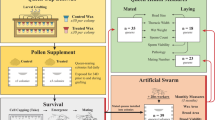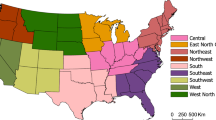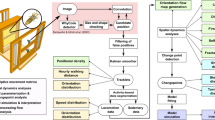When a queen dies, unrelated workers seize the chance to move into her nest and lay their own eggs.
Abstract
The queen of a honeybee colony has a reproductive monopoly because her workers' ovaries are normally inactive and any eggs that they do lay are eaten by their fellow workers1,2,3. But if a colony becomes queenless, the workers start to lay eggs, stop policing2 and rear a last batch of males before the colony finally dies out4. Here we show that workers of the Asian dwarf red honeybee Apis florea from other colonies exploit this interval as an opportunity to move in and lay their own eggs while no policing is in force. Such parasitism of queenless colonies does not occur in the western honeybee A. mellifera and may be facilitated by the accessibility of A. florea nests, which are built out in the open.
This is a preview of subscription content, access via your institution
Access options
Subscribe to this journal
Receive 51 print issues and online access
$199.00 per year
only $3.90 per issue
Buy this article
- Purchase on SpringerLink
- Instant access to full article PDF
Prices may be subject to local taxes which are calculated during checkout

Similar content being viewed by others
References
Ratnieks, F. L. W. & Visscher, P. K. Nature 342, 796–797 (1989).
Miller, D. G. & Ratnieks, F. L. W. Insectes Sociaux 48, 178–184 (2001).
Halling, L. A. et al. Behav. Ecol. Sociobiol. 49, 509–513 (2001).
Page, R. E. & Robinson, G. E. Behav. Ecol. Sociobiol. 35, 99–107 (1994).
Martin, C. J., Oldroyd, B. P. & Beekman, M. Behav. Ecol. Sociobiol. 56, 42–49 (2004).
Author information
Authors and Affiliations
Corresponding author
Ethics declarations
Competing interests
The authors declare no competing financial interests.
Supplementary information
Supplementary Methods
(DOC 29 kb)
Rights and permissions
About this article
Cite this article
Nanork, P., Paar, J., Chapman, N. et al. Asian honeybees parasitize the future dead. Nature 437, 829 (2005). https://doi.org/10.1038/437829a
Published:
Issue date:
DOI: https://doi.org/10.1038/437829a
This article is cited by
-
Similarities in Recognition Cues Lead to the Infiltration of Non-Nestmates in an Ant Species
Journal of Chemical Ecology (2022)
-
Ovary activation correlates with the reproductive potential of honeybee (Apis mellifera) workers if they are in a foreign colony
Insectes Sociaux (2022)
-
Apis florea and Apis cerana workers do not discriminate between queen-laid and worker-laid Apis mellifera eggs
Apidologie (2019)
-
Queenless colonies contribute to the male breeding population at honey bee drone congregation areas
Insectes Sociaux (2019)
-
Should I stay or should I go: honeybee drifting behaviour as a function of parasitism
Apidologie (2017)



